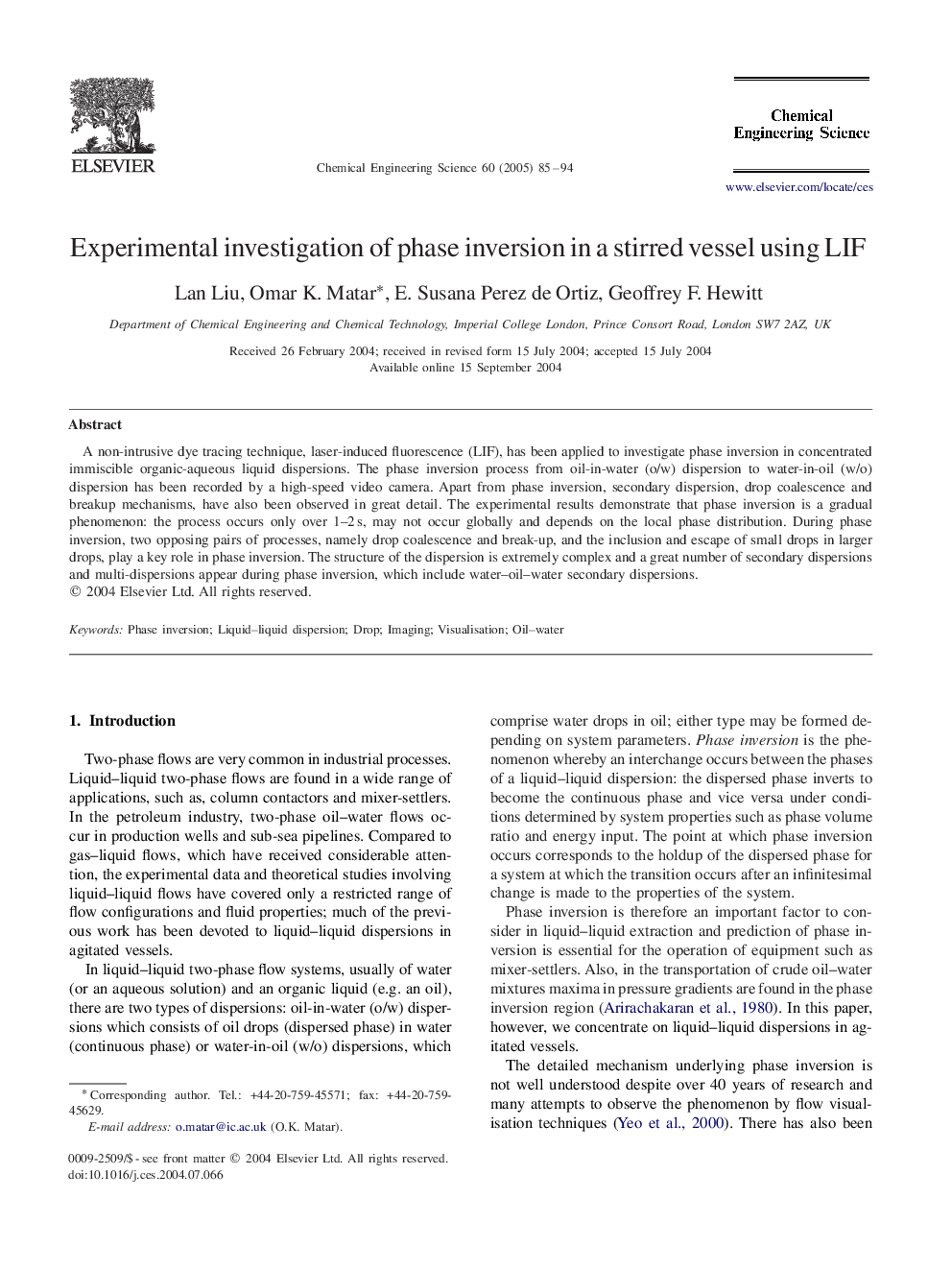| Article ID | Journal | Published Year | Pages | File Type |
|---|---|---|---|---|
| 10263795 | Chemical Engineering Science | 2005 | 10 Pages |
Abstract
A non-intrusive dye tracing technique, laser-induced fluorescence (LIF), has been applied to investigate phase inversion in concentrated immiscible organic-aqueous liquid dispersions. The phase inversion process from oil-in-water (o/w) dispersion to water-in-oil (w/o) dispersion has been recorded by a high-speed video camera. Apart from phase inversion, secondary dispersion, drop coalescence and breakup mechanisms, have also been observed in great detail. The experimental results demonstrate that phase inversion is a gradual phenomenon: the process occurs only over 1-2Â s, may not occur globally and depends on the local phase distribution. During phase inversion, two opposing pairs of processes, namely drop coalescence and break-up, and the inclusion and escape of small drops in larger drops, play a key role in phase inversion. The structure of the dispersion is extremely complex and a great number of secondary dispersions and multi-dispersions appear during phase inversion, which include water-oil-water secondary dispersions.
Related Topics
Physical Sciences and Engineering
Chemical Engineering
Chemical Engineering (General)
Authors
Lan Liu, Omar K. Matar, E. Susana Perez de Ortiz, Geoffrey F. Hewitt,
